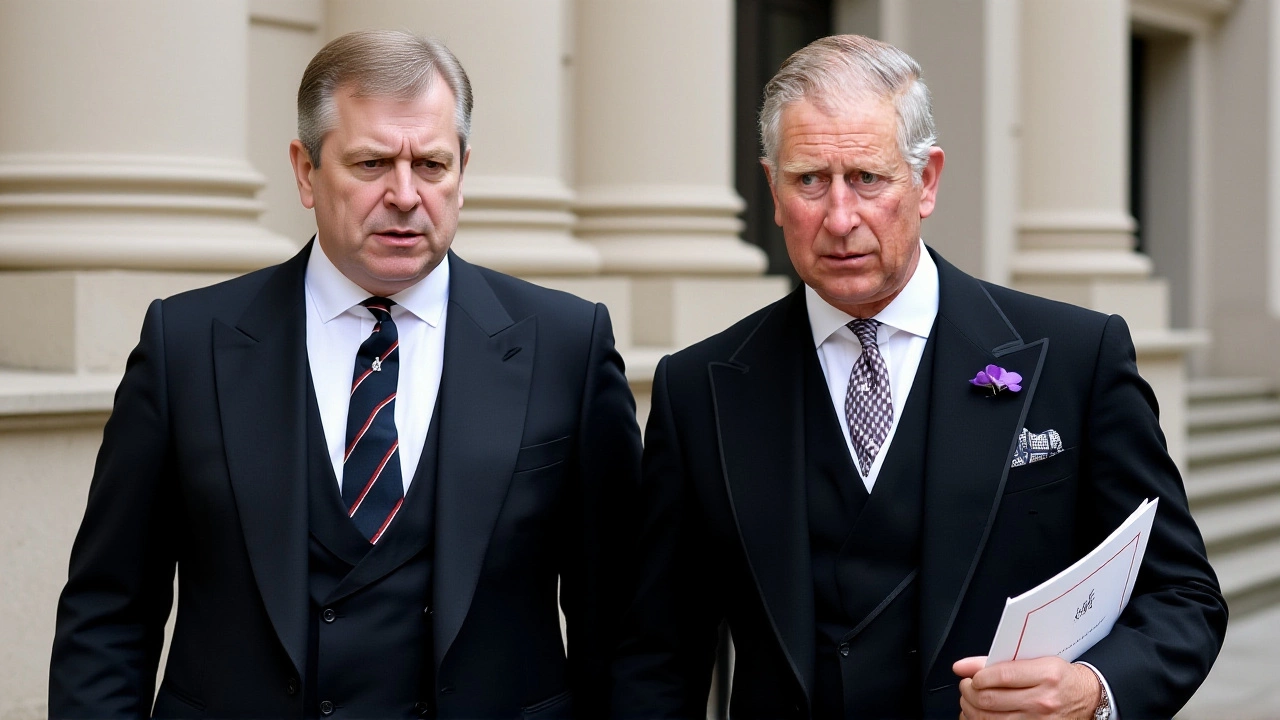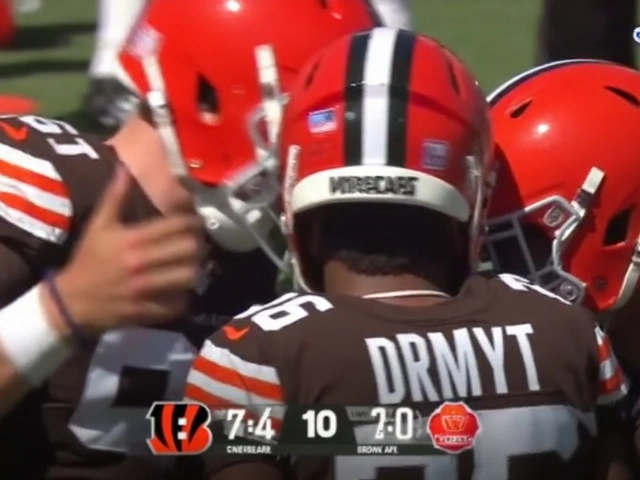It’s not just a horse ride—it’s a political statement. Prince Andrew Mountbatten-Windsor, 65, was photographed trotting across the private grounds of Windsor Castle on November 17, 2025, just days after being formally stripped of his royal titles. The timing couldn’t be worse. His new neighbors—Prince William and Princess Catherine—had just moved into Forest Lodge, a stone’s throw from his home at Royal Lodge in Berkshire. And now, taxpayers are asking: why is he using royal land like it’s still his playground?
Behind the Ride: A Secret Escape
According to sources cited by GB News and the Daily Mail, Andrew didn’t just stroll out to the stables. He was smuggled out of Royal Lodge in the back of a car, hooded from view, to avoid cameras. The ride lasted 45 minutes. He didn’t go alone—his ex-wife, Sarah Ferguson, was reportedly with him. This wasn’t a spontaneous joyride. It was a calculated return to a routine he’d kept for years: three or four weekly visits to the royal stables, as regular as clockwork, before the fall.But now, he’s no longer a prince. Not legally. Not officially. Not in the eyes of the Crown.
On November 3, 2025, King Charles III, 76, signed Letters Patent under the Great Seal of the Realm, revoking Andrew’s style of Royal Highness and the title of Prince. The move was published in The Gazette on November 6, making Andrew Mountbatten-Windsor a private citizen—no longer entitled to royal privileges, no longer a working member of the family.
Yet here he was, riding the same paths once trod by royalty.
Why This Matters: A Family in Fracture
The tension isn’t just about horseback riding. It’s about boundaries.King Charles has walked a tightrope: keep his brother from complete ostracization, but not at the cost of public trust. He’s allowed Andrew to attend private portions of royal events—like the June 16, 2025, Order of the Garter lunch—while banning him from public processions for the fourth year running. Andrew even showed up at Easter Sunday church in April 2025, sitting quietly beside Charles and Queen Camilla, but didn’t acknowledge well-wishers. No smile. No nod. Just silence.
"He doesn’t want to antagonise his younger brother entirely," royal biographer Andrew Lownie told Geo.tv in October 2025. "But he needs to recognise that the public want some answers about the Yorks’ connections with Jeffrey Epstein and how they’ve exploited their royal status for personal financial gain."
That’s the unspoken pressure. Andrew’s association with convicted sex offender Jeffrey Epstein—exposed in his disastrous 2019 BBC Newsnight interview—has haunted the monarchy for years. His removal from royal duties in 2022 was just the beginning. Now, with the titles gone, the family’s trying to draw a line.
And yet… Andrew still hosts the annual royal shooting parties at Windsor. He’s invited to family meals. He’s not entirely cut off. But the message is clear: you’re not one of us anymore.

The Sandringham Exit Strategy
"That move to Sandringham can’t come soon enough to get him away from Windsor," a royal source told GB News. It’s no secret: Sandringham House in Norfolk is being readied as Andrew’s new base. The estate, long used by the royal family for private retreats, is far enough from Windsor to avoid daily friction—and far enough from the public eye to reduce media scrutiny.It’s a quiet exile. No press release. No fanfare. Just a slow, dignified retreat.
But even that plan is complicated. Andrew’s presence at Royal Lodge has already sparked complaints from local residents. One Windsor villager, speaking anonymously to the Daily Mail, said: "We used to see him at the shops, the pub, the post office. Now he’s a ghost—or a ghost with a horse. It’s unsettling. He’s still here. But he’s not supposed to be."
What’s Next? The Unspoken Rules of Royal Exile
The monarchy doesn’t have a rulebook for this. No precedent for stripping a prince of his title while letting him live on royal land. But Charles is setting one now.He’s balancing family loyalty with public accountability. He’s not banishing Andrew entirely—he’s redefining his place. The King’s reportedly told aides: "I feel I have a duty of care to Andrew. But I can’t let him define our future."
That’s the twist. This isn’t just about punishment. It’s about containment.
Andrew’s financial ties to Epstein-linked figures remain under investigation. His ex-wife Sarah Ferguson’s own controversial business deals—like the 2020 "Epstein-linked" yacht trip—are still being scrutinized by media watchdogs. And while Charles has cut ties, he hasn’t erased them.
So what happens next? If Andrew continues to appear on royal grounds, expect more public backlash. If he vanishes to Sandringham quietly, the monarchy might survive the scandal intact. But if he tries to reclaim his old status—through photos, interviews, or public appearances—Charles will have no choice but to cut him off completely.

Timeline: The Fall of a Prince
- 2019: Andrew’s disastrous BBC Newsnight interview on Epstein fuels public outrage.
- 2022: Stripped of military titles and royal patronages under Queen Elizabeth II.
- April 21, 2025: Makes first public appearance since 2024 at Easter church service, silent to well-wishers.
- June 14–16, 2025: Banned from Trooping the Colour and Garter Day procession, but attends private lunch.
- November 3, 2025: Letters Patent signed revoking "Royal Highness" and "Prince" status.
- November 6, 2025: Officially removed from royal register by The Gazette.
- November 17, 2025: Photographed riding at Windsor Castle, sparking immediate backlash.
Frequently Asked Questions
Why was Prince Andrew stripped of his titles?
King Charles III revoked Andrew’s "Royal Highness" style and "Prince" title via Letters Patent on November 3, 2025, following years of controversy tied to his association with convicted sex offender Jeffrey Epstein. The move was formalized in The Gazette on November 6, 2025, and followed his 2022 removal from royal duties. The decision aimed to protect the monarchy’s reputation amid persistent public demand for accountability.
Can Prince Andrew still use Windsor Castle grounds?
Technically, no. Windsor Castle and its surrounding parklands are Crown property, funded by taxpayers. While Andrew still resides at Royal Lodge—a private residence within the estate—he is no longer entitled to use royal facilities for personal leisure. His recent horse ride sparked criticism because it blurred the line between private residence and public asset, especially after his titles were revoked.
Why is King Charles allowing Andrew to stay at Royal Lodge?
Royal insiders suggest Charles is giving Andrew time to transition out of Windsor before relocating him to Sandringham House. The King reportedly feels a personal duty to his younger brother but wants to avoid a public spectacle. Keeping Andrew at Royal Lodge temporarily avoids the appearance of harshness, while the planned move to Norfolk signals a permanent distancing.
Is Sarah Ferguson still part of the royal family?
No. Sarah Ferguson, the Duchess of York, was never an official working royal, but her ties to Epstein and her own controversial business ventures—including a 2020 undercover sting involving her and a financier linked to Epstein—have kept her in the public eye. She remains a private citizen and is not invited to official royal events, though she still accompanies Andrew to private gatherings like Easter services.
Will Prince Andrew ever be fully welcomed back?
Almost certainly not. While King Charles has shown some leniency—allowing private attendance at events like the Garter lunch—public perception has hardened. Royal biographer Andrew Lownie and insiders agree: the monarchy’s survival depends on distancing itself from Epstein’s shadow. Any full reinstatement would trigger a media firestorm and likely damage the institution’s credibility.
What’s the significance of Sandringham in this story?
Sandringham House is a historic royal estate in Norfolk, traditionally used for private family retreats. Moving Andrew there removes him from the center of royal activity in Windsor and reduces opportunities for public encounters or media stunts. It’s a symbolic step: not punishment, but quiet removal. The move signals the end of Andrew’s role as a fixture in royal life—and the beginning of his life as a former prince.




Write a comment